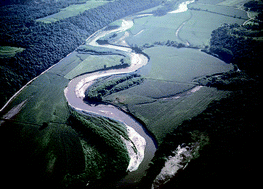In EUROHARP, an EC Framework V project, which started in 2002 with 21 partners in 17 countries across Europe, a detailed intercomparison of contemporary catchment-scale modelling approaches was undertaken to characterise the relative importance of point and diffuse pollution of nutrients in surface freshwater systems. The study focused on the scientific evaluation of different modelling approaches, which were validated on three core catchments (the Ouse, UK; the Vansjo-Hobøl, Norway; and the Enza, Italy), and the application of each tool to three additional, randomly chosen catchments across Europe. The tools involved differ profoundly in their complexity, level of process representation and data requirements. The tools include simple loading models, statistical, conceptual and empirical model approaches, and physics-based (mechanistic) models. The results of a scientific intercomparison of the characteristics of these different model approaches are described. This includes an analysis of potential strengths and weaknesses of the nutrient models.

You have access to this article
 Please wait while we load your content...
Something went wrong. Try again?
Please wait while we load your content...
Something went wrong. Try again?


 Please wait while we load your content...
Please wait while we load your content...